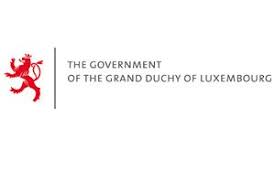Historical Overview
PEFA was established as a means to reduce the duplication and costs of multiple assessments and to facilitate dialogue between government and others about how to improve the effectiveness of fiscal policies. PEFA was also aimed at improving the results of development cooperation as part of the global aid effectiveness agenda. It provided support for the Strengthening Approach established in 2005 through the Paris Declaration, then further developed in the Accra Agenda for Action in 2008, and the Busan Partnership for Effective Development Cooperation in 2011.
Effective institutions and systems of public financial management (PFM) play a crucial role in the implementation of national policies concerning development and poverty reduction. Good PFM is the linchpin that ties together available resources, delivery of services, and achievement of government policy objectives. If it is done well, PFM ensures that revenue is collected efficiently and used appropriately and sustainably.
PEFA introduced a standard methodology and reference tool for PFM diagnostic assessments. It was extensively discussed and tested between 2001 and 2005 with the aim of harmonizing the needs of government and their development partners for a common analytical tool and shared data. The first publicly available version of PEFA was launched in 2005 and reports for Afghanistan and Zambia were produced in that year.
Since the early assessments in 2005 PEFA has been used more than 600 times in 153 countries. It has become the acknowledged standard for PFM assessments and has amassed a pool of data comprising over 40,000 individual performance scores.
20 Years Timeline
PEFA Program was Established by Seven Partners
Stage 1
Development
was primarily concerned with creating a consensus on the most appropriate approach to supporting PFM systems. It focused on development of the PEFA performance measurement framework.
2001
PEFA program established by the seven partners
Stage 2
Dissemination
was concerned with supporting users of PEFA during early implementation and establishing systems for monitoring its use.
2005
The 'Strengthened Approach' established through the Paris declaration
Stage 3
Integration
involved creation and use of a pool of information on PFM performance from PEFA assessments. The program focused on improving the quality of assessments and monitoring changes over time.
2005
First publicly available version of the PEFA framework launched
2005
First PEFA reports completed for Afghanistan and Zambia
2008
Accra agenda for action approved
Stage 4
Global Public Good
involved a doubling of the number of new and successive assessments by central and subnational governments. The assessment methodology was substantially upgraded. It was also strengthened through the introduction of PEFA Check process quality arrangements. The PFM performance information data base was expanded and knowledge dissemination was increased. PEFA was used by many governments and development institutions for examining and planning PFM reform initiatives and strategies.
2011
Busan Partnership for Cooperative Development approved
2011
Second version of the PEFA framework published with some minor amendments to three performance indicators
2016
A major upgrade of the framework, PEFA 2016 is publicly launched following extensive testing
Stage 5
PEFA and PFM Reform
will build on the previous four phases. It will take into consideration the changes in the PFM policy and analysis landscape. It will respond to demand from the PEFA community for diverse applications of the PEFA methodology and greater contribution to advances in knowledge, skills and insight into more effective performance assessment and reform action.
2019
An analytical study is being undertaken for the PEFA Steering Committee that will examine options for the future of the PEFA program.
2021
End of phase 5 of the PEFA program





